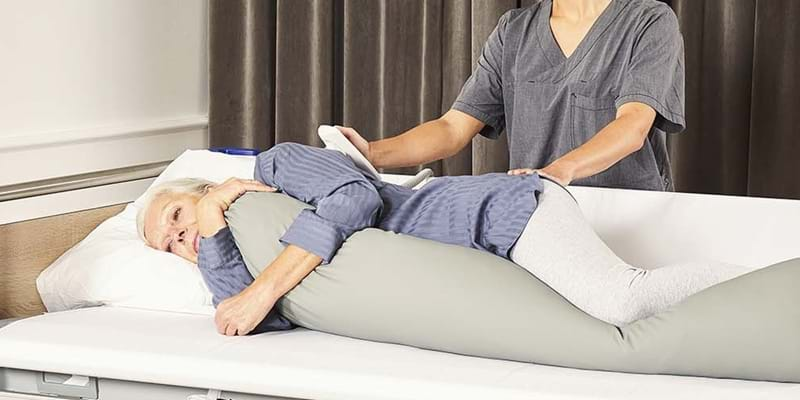
Safe and Comfortable Patient Transfer using Tactile Stimuli
Clients who are cognitively challenged, have sensory difficulties or for some other reason feel unsafe when being moved and handled by care specialists, may have an additional need for tactile stimuli and reassurance when being turned in bed. In this article, we will describe a method for transferring a patient while making them feel safe and comfortable.
1. March 2020
By: Occupational Therapist, Pia Beck
Clients with dementia, sensory deprivation or other cognitive challenges may feel anxious or uneasy while being moved or turned in bed by carers. In some cases, this creates a situation where the client is struggling with or maybe even reacting violently (physically or verbally) towards staff. For care specialists, this means that they are required to balance both performing a task and reassuring the client at the same time.
One way to get ahead of this situation is by facilitating a support cushion to provide tactile stimulation during moving and handling. Tactile stimulation can have a calming effect on clients that have a limited cognitive understanding of what is going on in a care situation.
Depending on the client’s mobility and needs, you can apply different cushions for this method. However, it is important to use a cushion that has the correct requirements. First, the cushion must have a certain weight to it, for it to provide optimal tactile stimulation. If the cushion is too light, it will not provide the proper amount of comfort for the client.
Next, it is also important to use a positioning cushion with a type of filling that is not too mouldable, so that it does not move too much when the client hugs the cushion. As such, a cushion filled with foam is preferable over a cushion filled with Styrofoam balls.
In the example illustrated below, we are using our cylindrical support cushion while turning the client.
Simply place a suitable support cushion on top of the client before the transfer begins and let him/her hold on to it during the transfer. This occupies the client’s arms, while the weight of the cushion allows the client to be in touch with their own body. The tactile stimulation will allow the client’s body to recognize the movement patterns of being turned in bed, giving the client a better sense of what is going on, without having the full cognitive understanding.



This transfer method can be used for
- Clients with cognitive challenges
- People with dementia
- Clients with sensory deprivation
- Clients that feel unsafe or anxious
